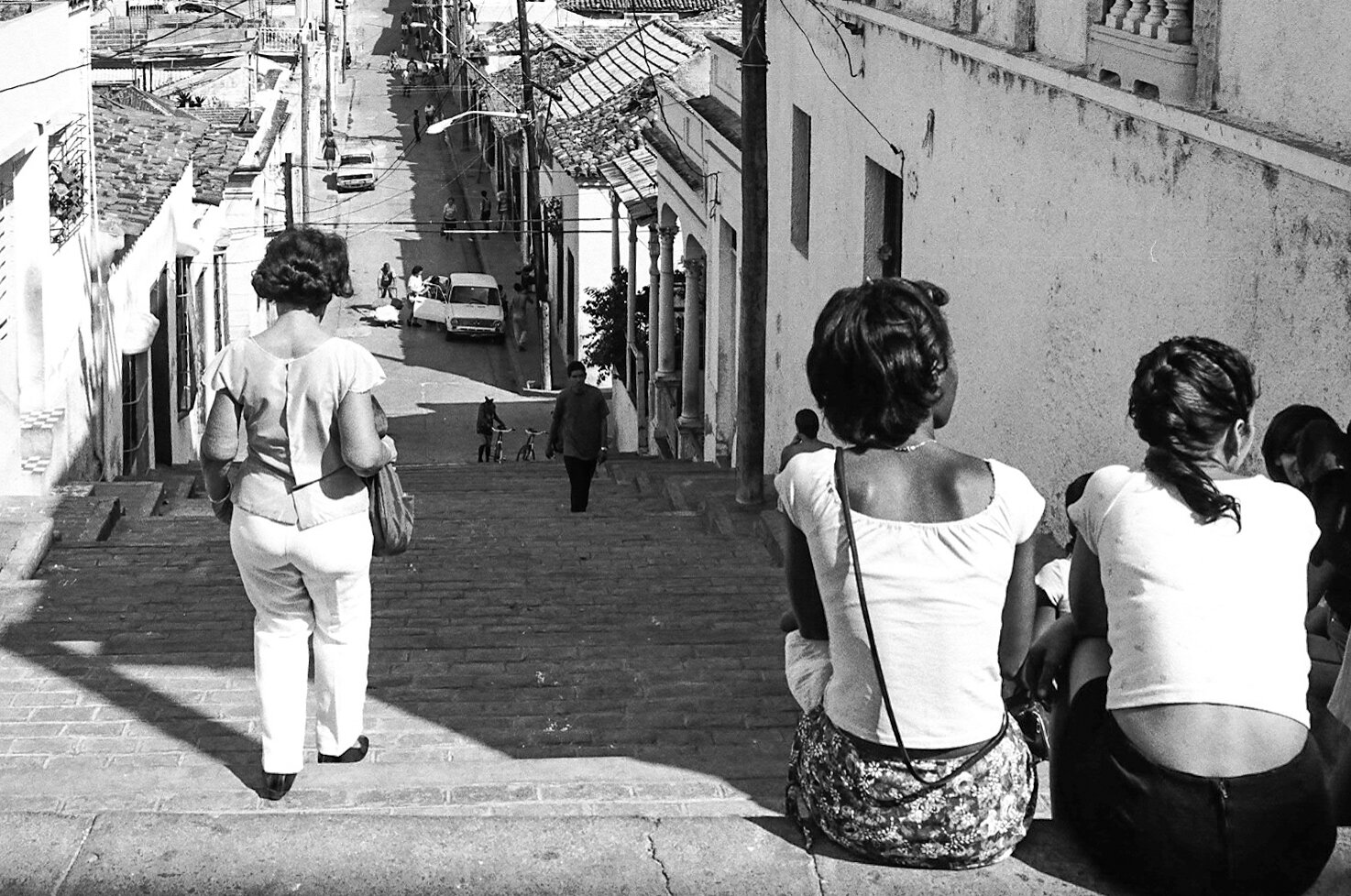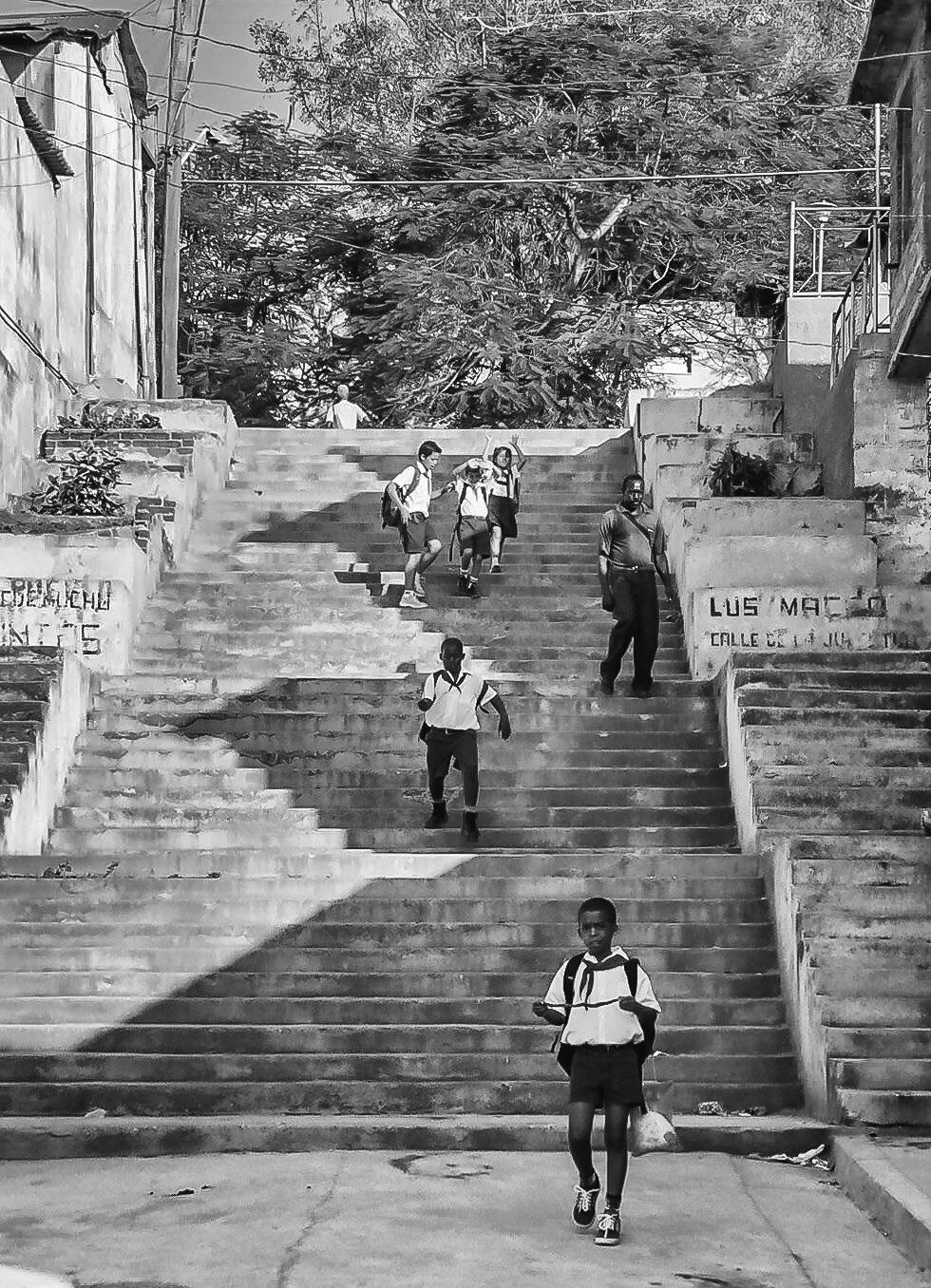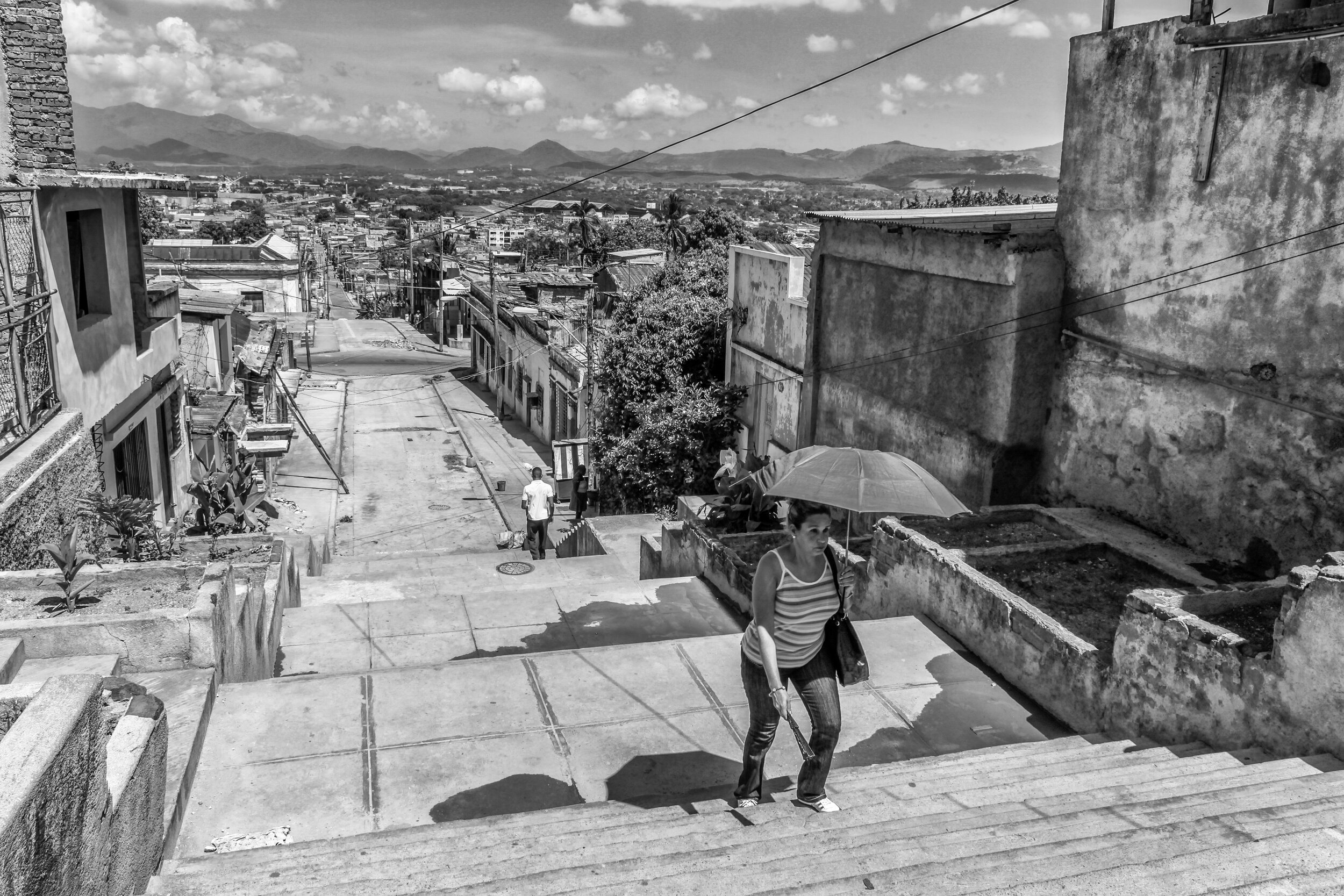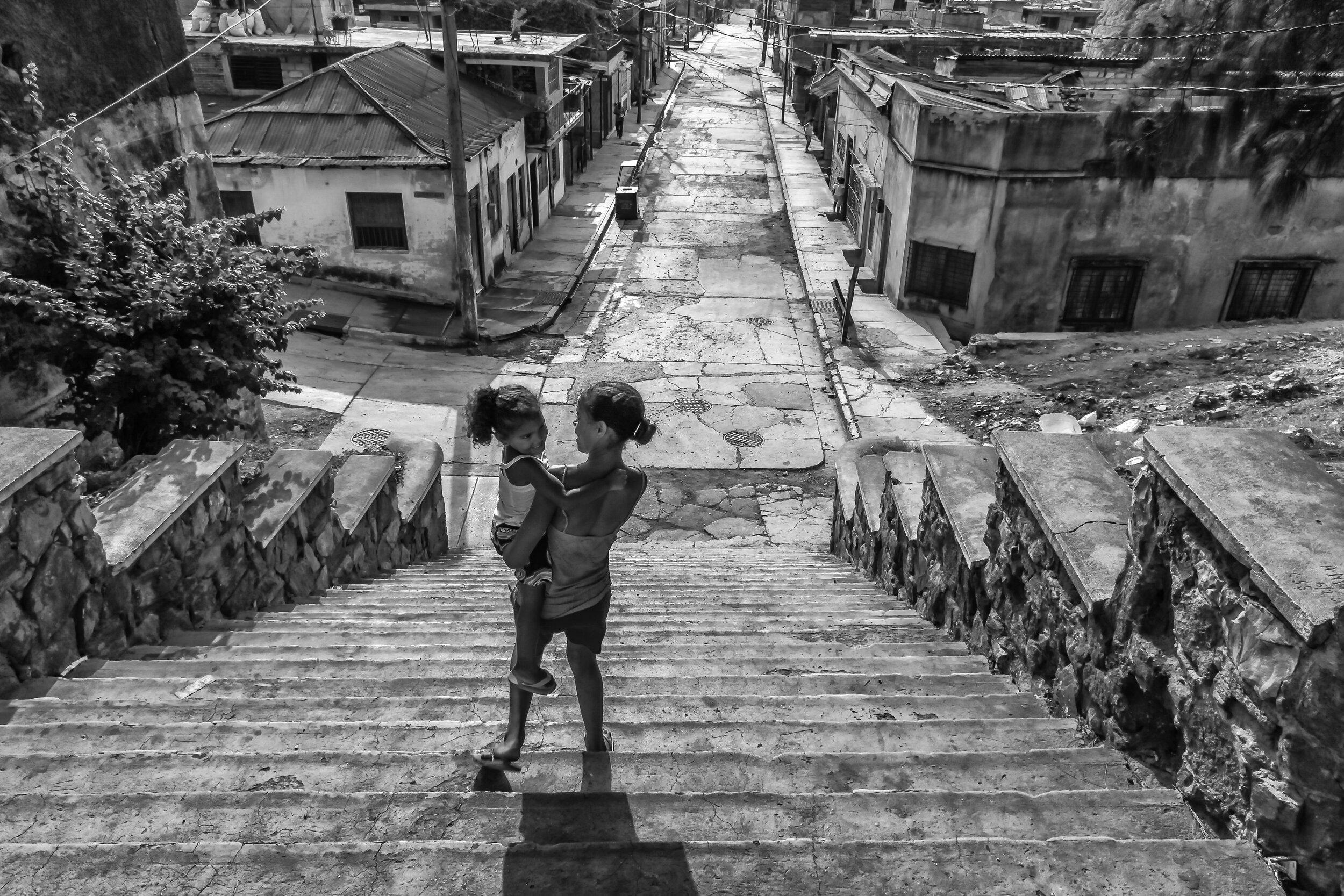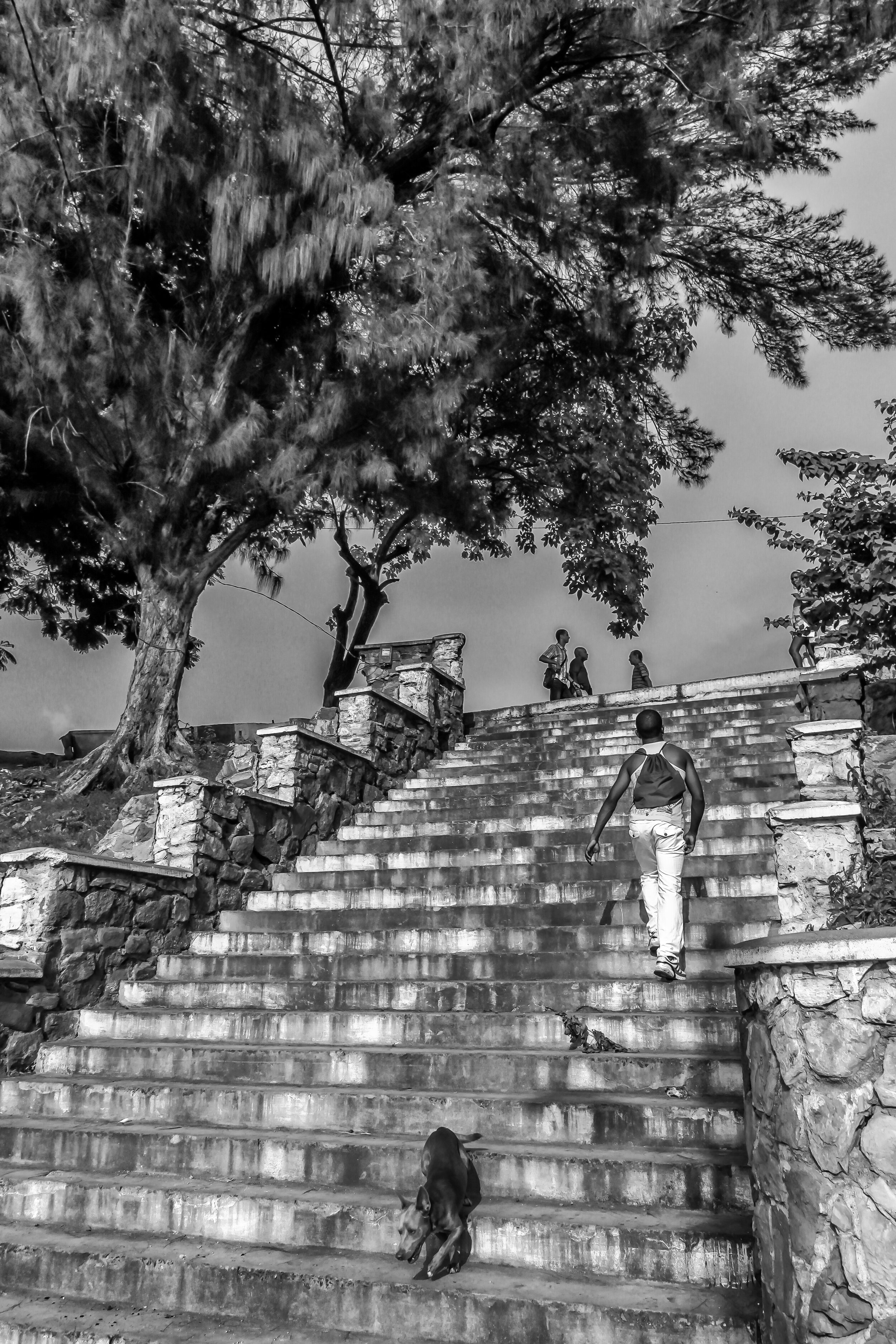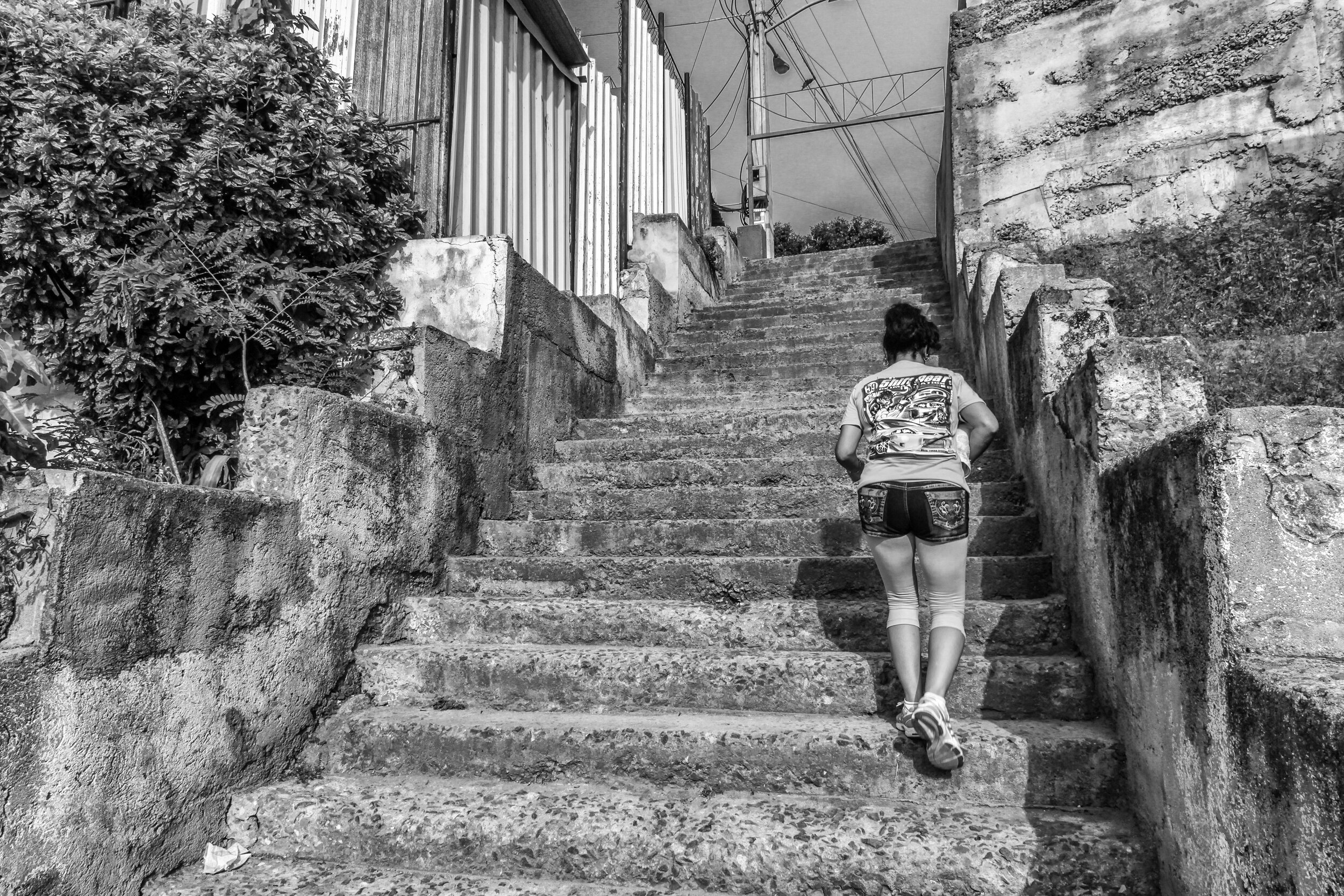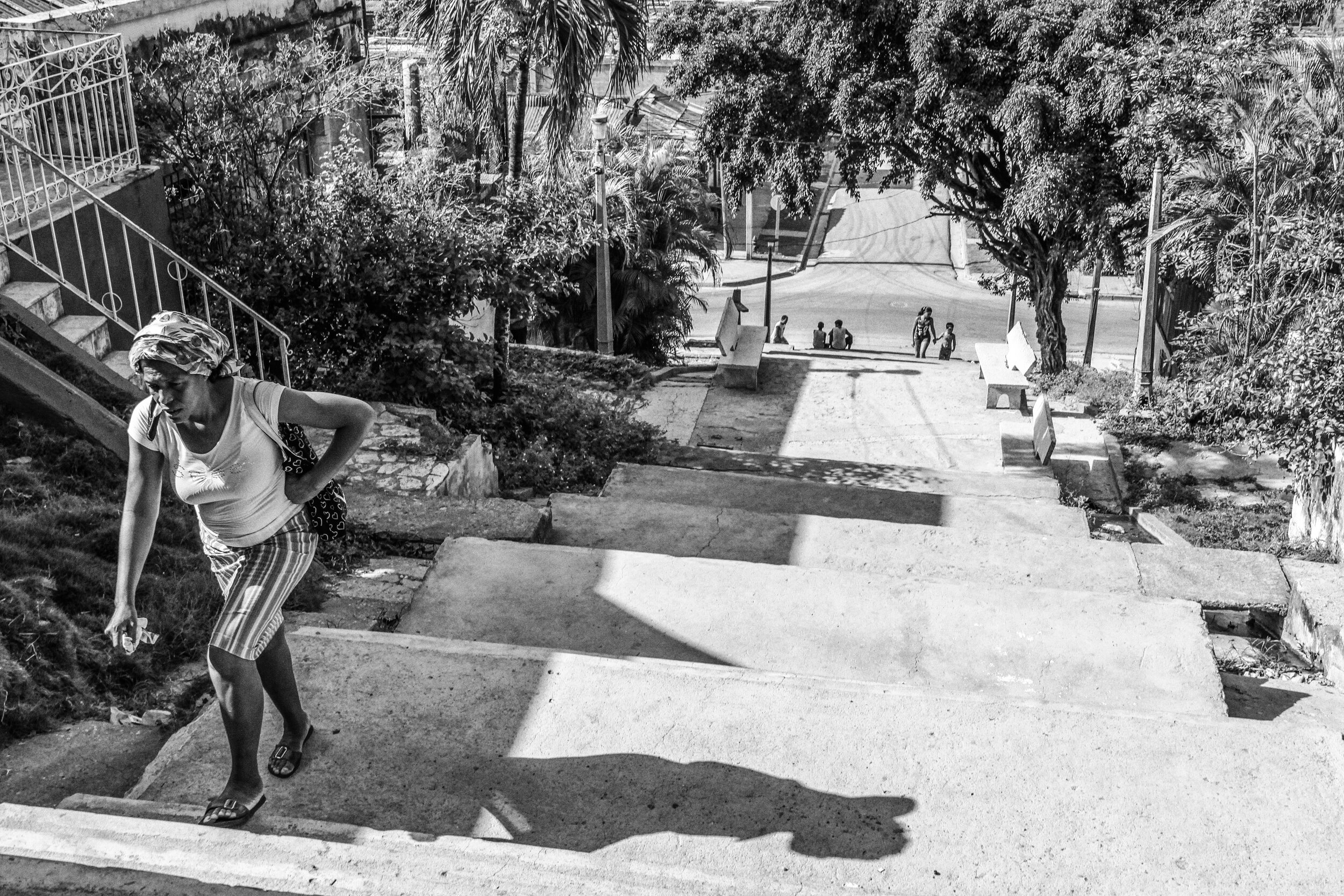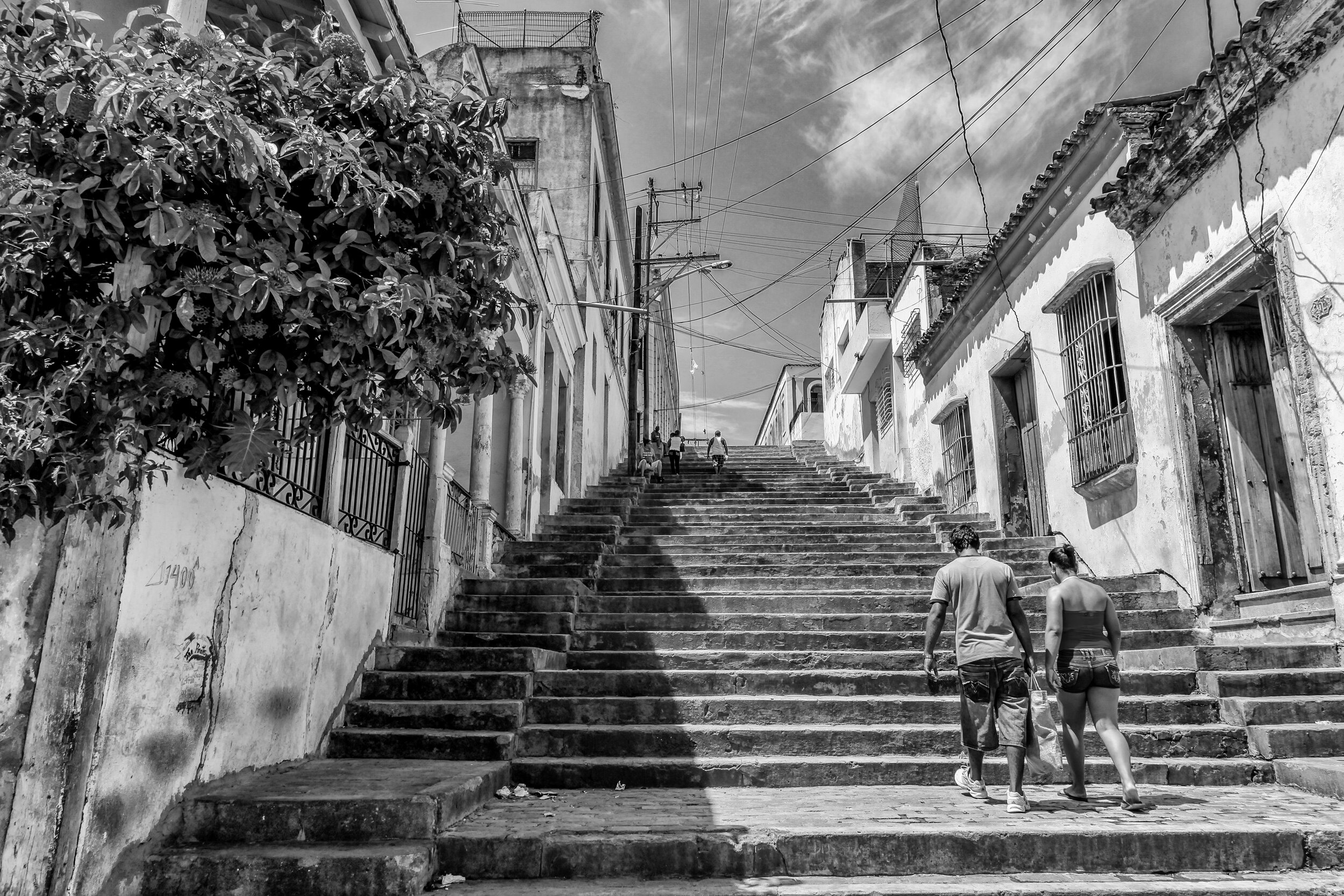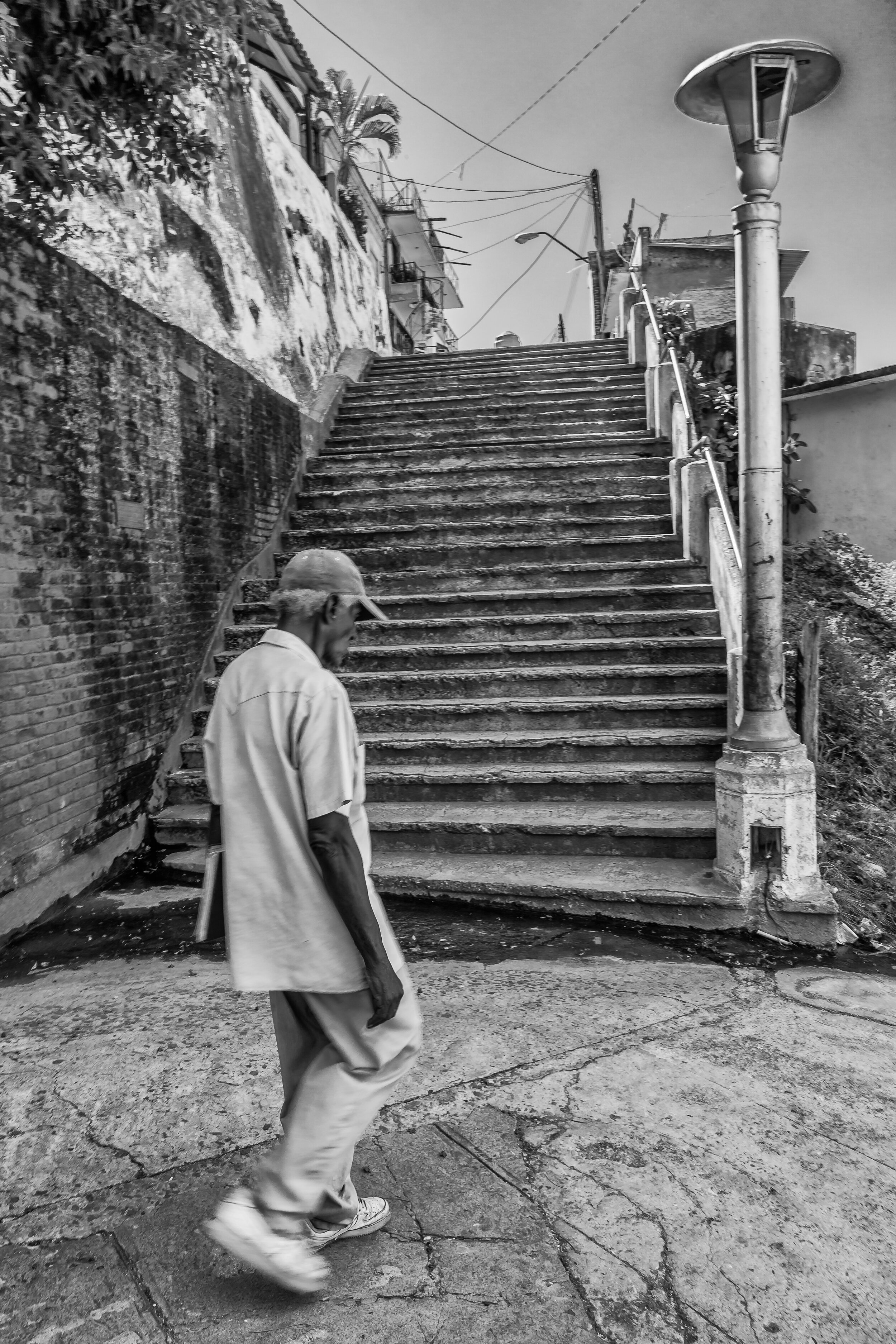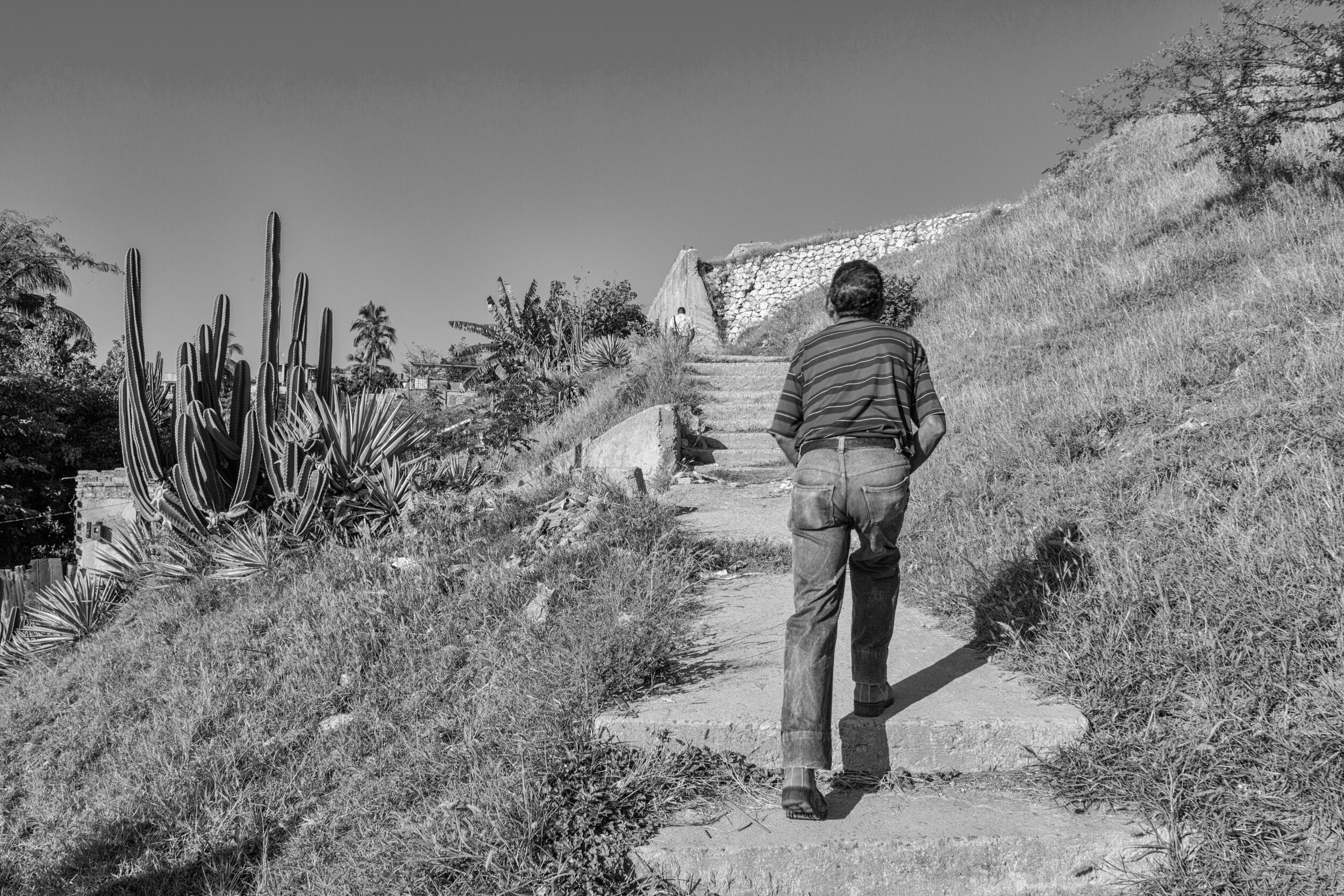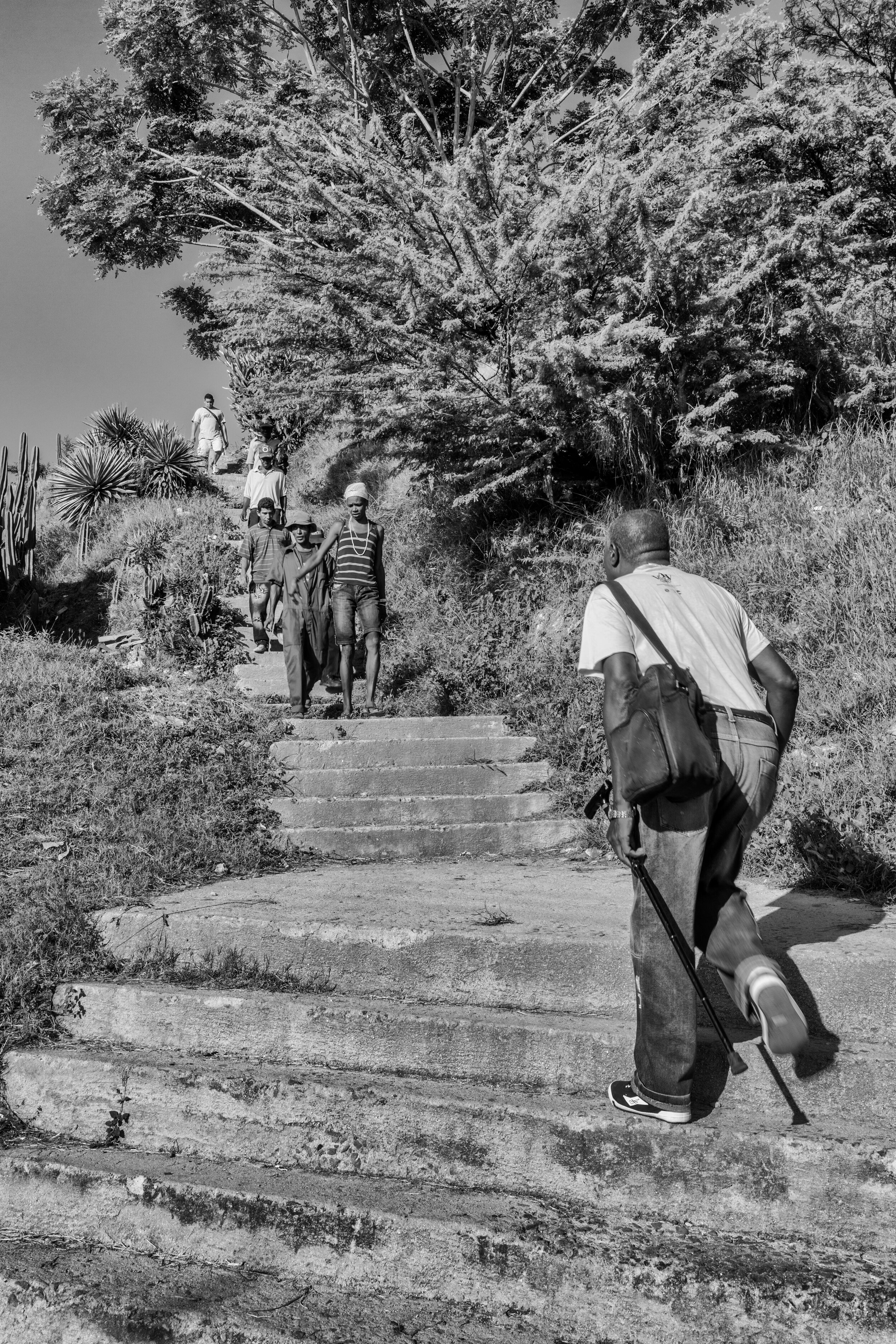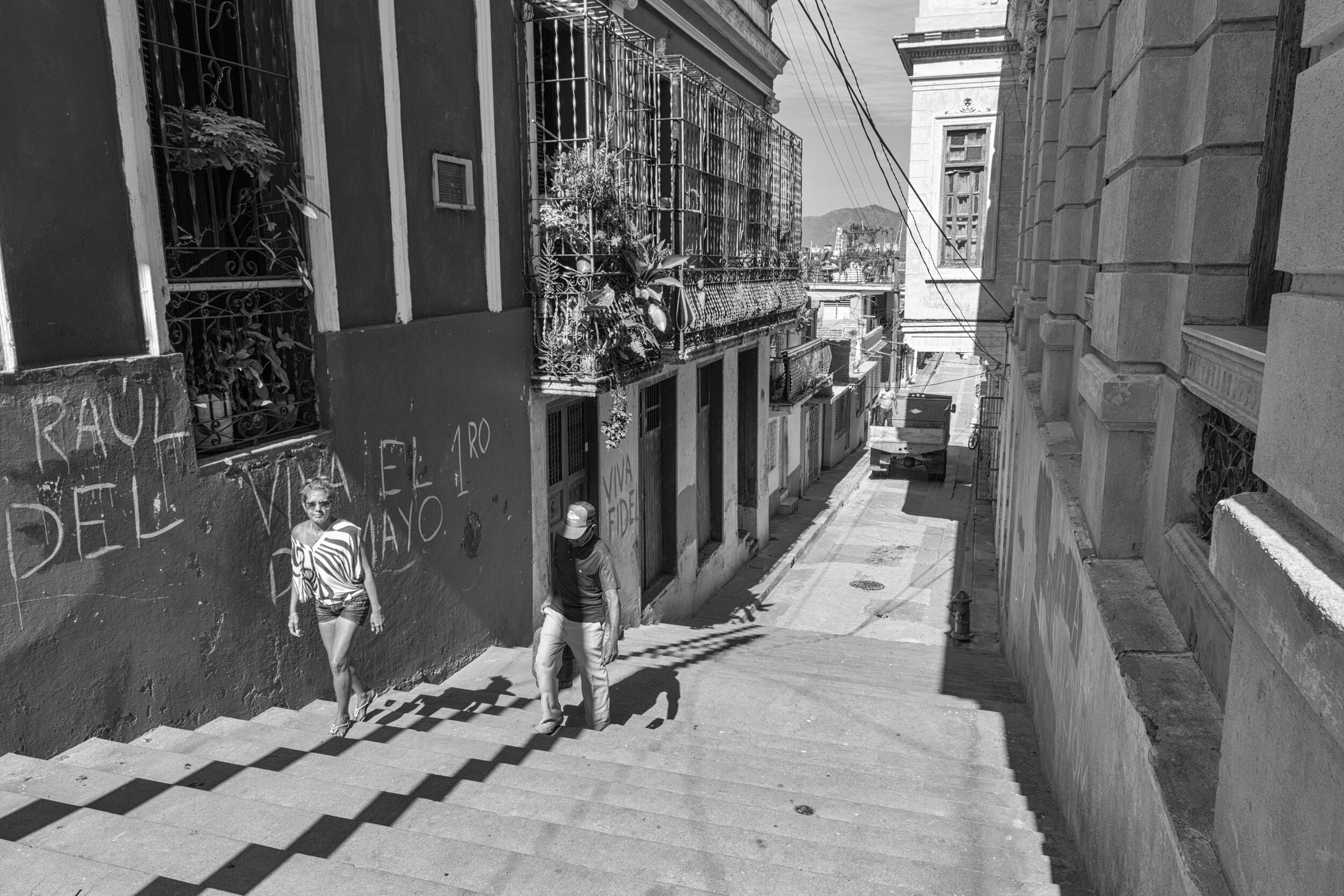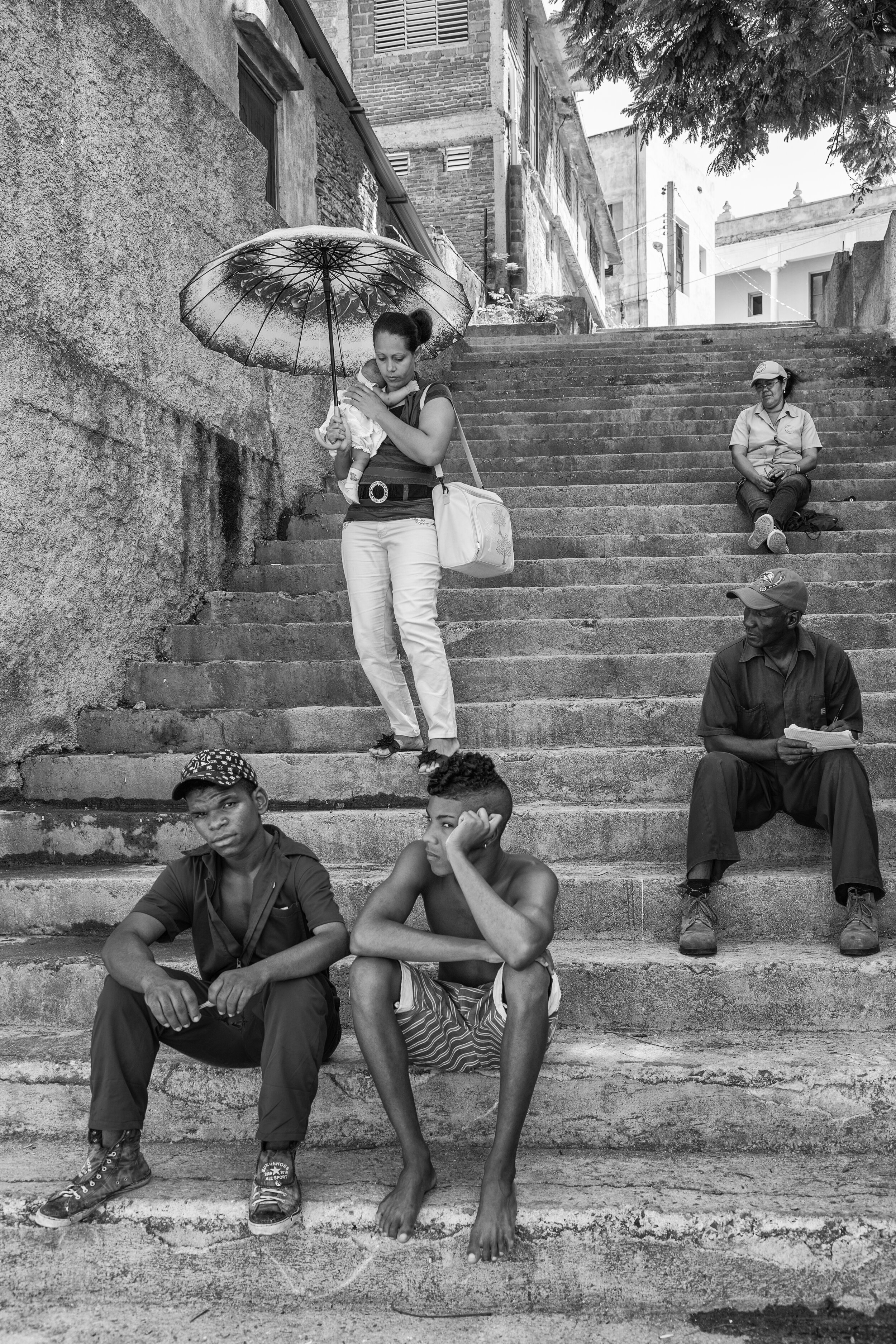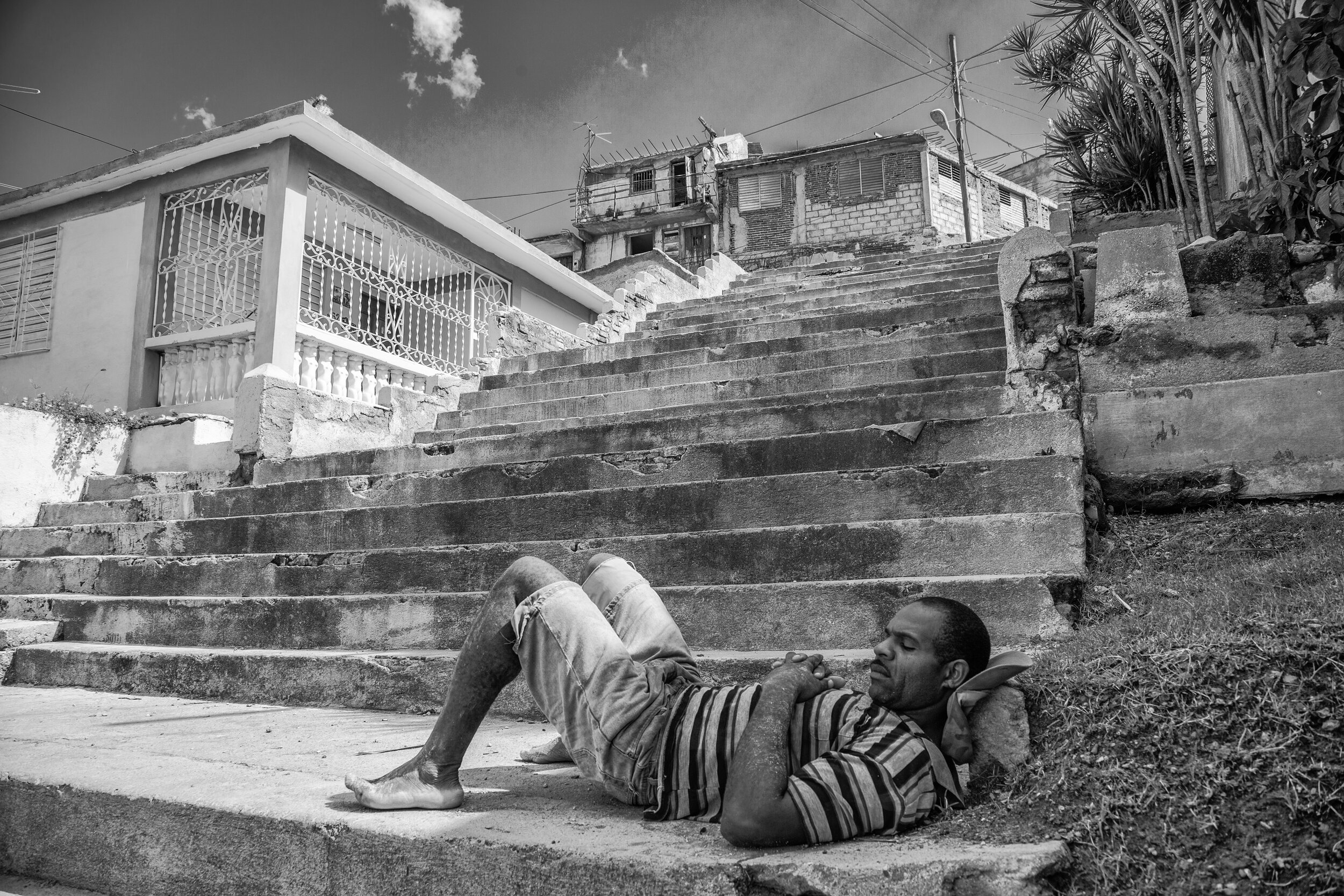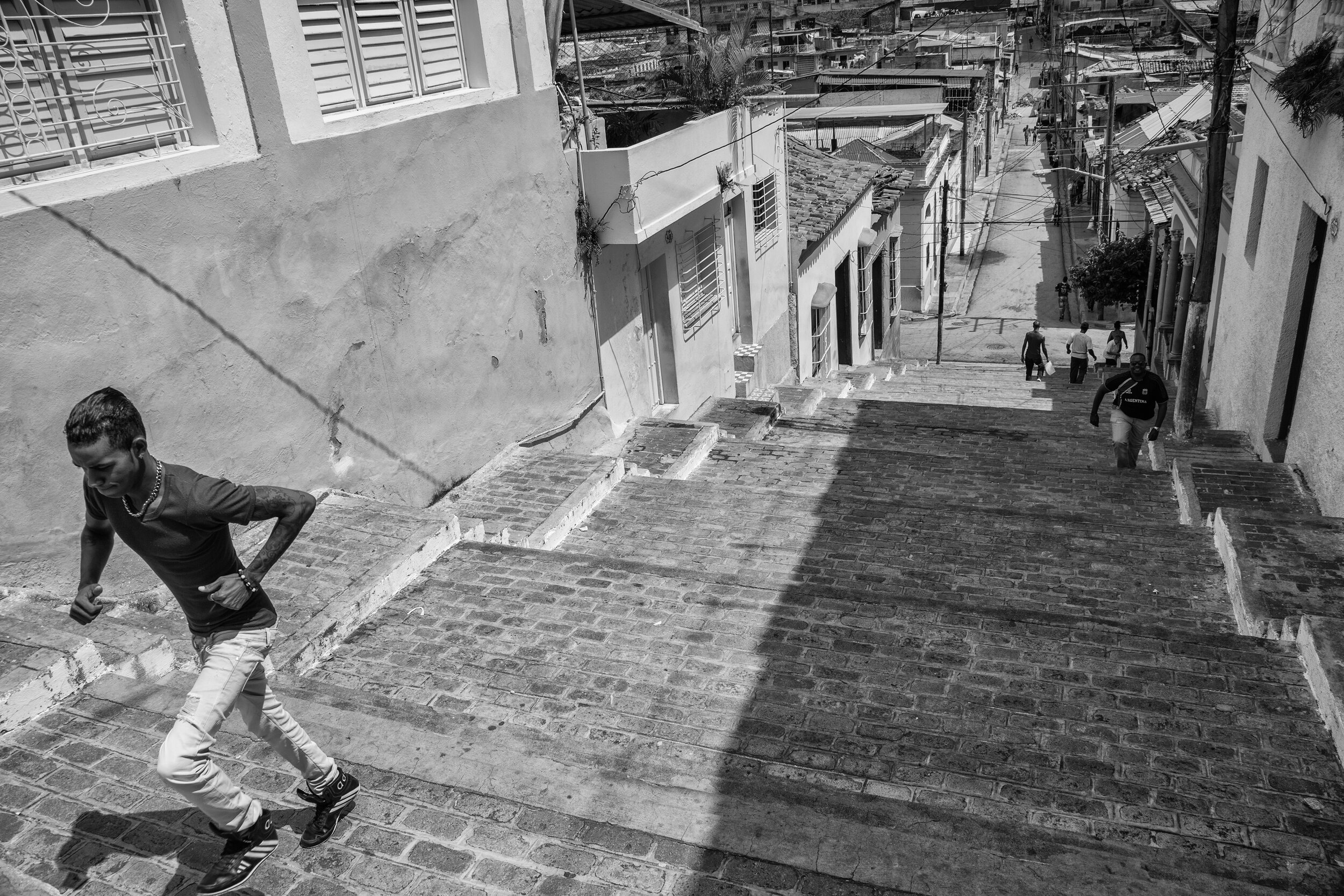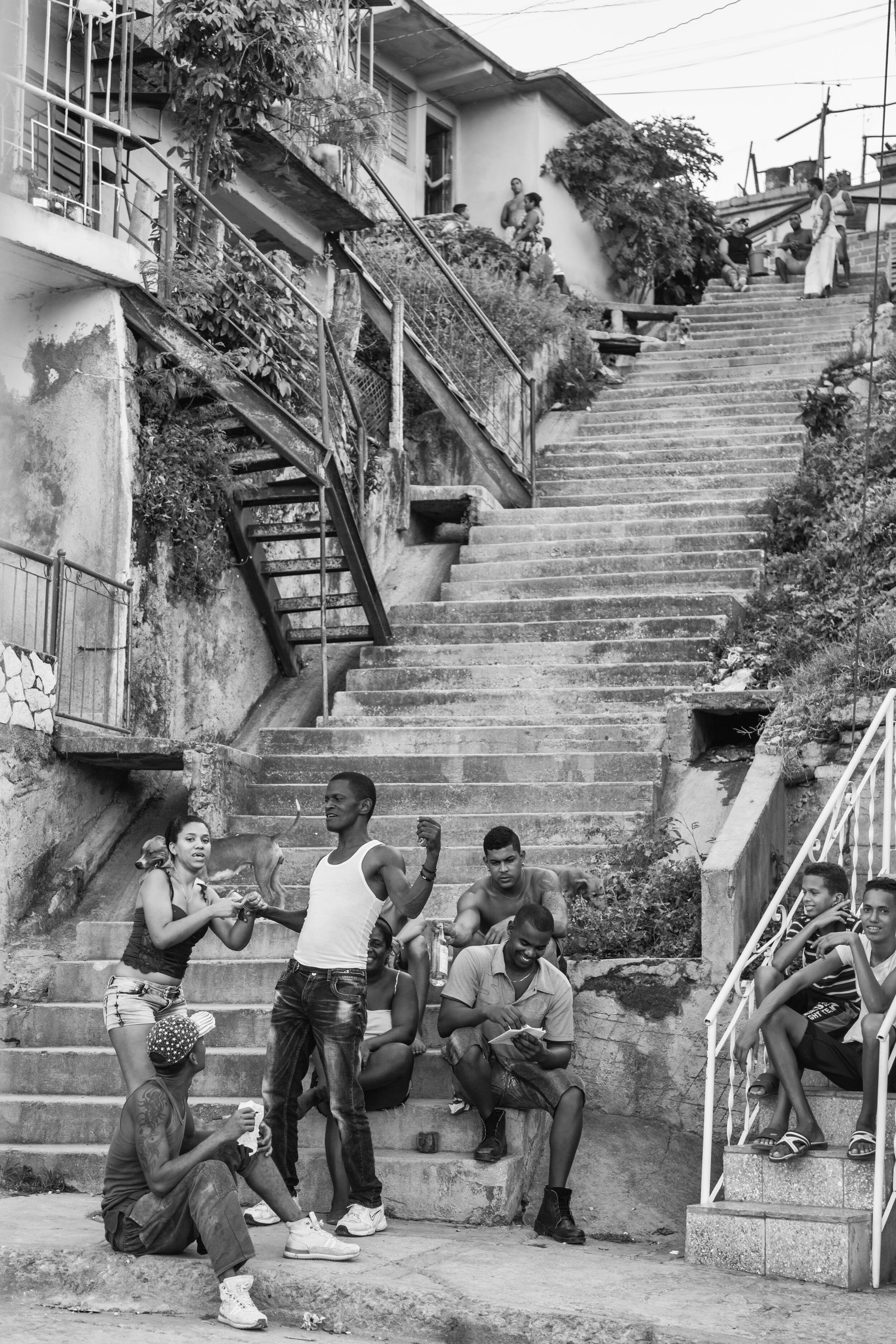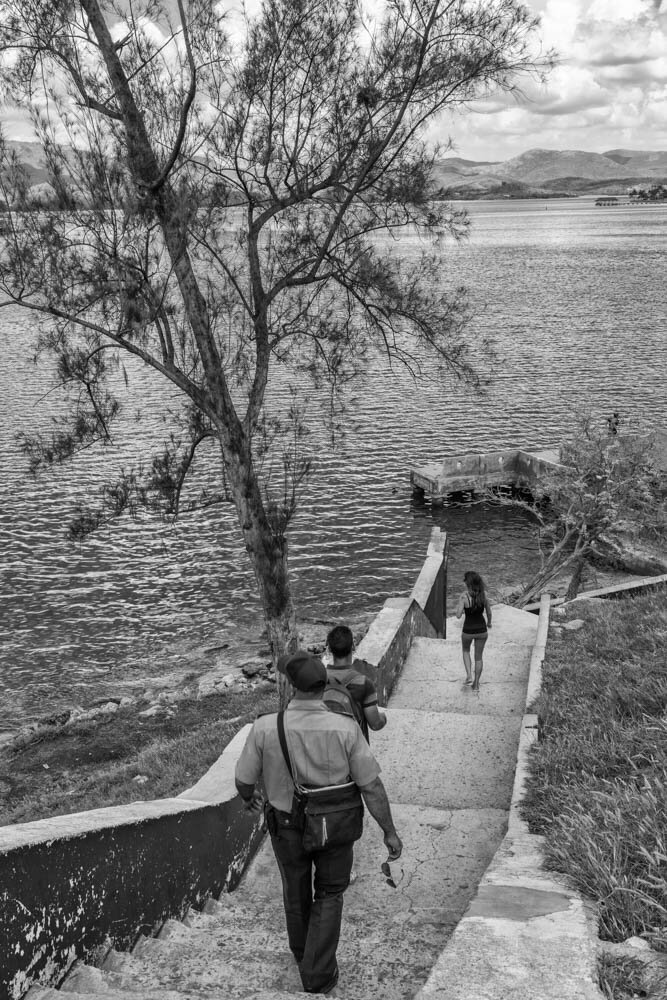Las Escalinatas de Santiago de Cuba (2004-2016)
You can't discuss Santiago de Cuba without mentioning its notable feature: street stairs, or 'escalinatas' in Spanish. The reason behind the abundance of stairs in Santiago is evident to anyone who has walked its hilly streets. But beyond the topography, the city's history and architecture play crucial roles in shaping its staircases. Each construction project in Santiago reflects its steep inclines, often necessitating the use of stairs.
Every step of these staircases holds stories, secrets, and experiences, echoing the narratives of both their builders and the daily passersby. The most renowned staircase, synonymous with the city, is the Padre Pico staircase on the old Corvacho hill. Legend has it that this staircase was built by Santiago's esteemed mayor, Emilio Bacardi Moreau, who modestly refused to name it after himself. Instead, he dedicated it to Dr. Bernardo Antonio del Pico y Redín, the Dean of the city's cathedral, known for his dedication to the parishioners and the town.
Today, these stairs serve as meeting spots and resting places for those navigating Santiago's hills, enduring its hot temperatures that earned it the moniker 'the hot land'."But why does Santiago have so many stairs on the street? Finding the answer to this question is not difficult for those who have walked in the city and know the hills that exist in it. But beyond that reason, the history of the city and its architecture is very important when talking about the city's steps. Every construction effort that begins in the city in some way shows its inclinations, which sometimes tend to be so steep that people can only move through the existence of stairs or stairways.
Every inch of the steps of these stairs is impregnated with stories, secrets, and experiences that speak both of the stories of those who built them, as well as of those who walk through them every day. The most famous of all and that in some way when mentioning it the city is identified, is the Padre Pico staircase. Located on the old hill of Corvacho, whose name comes from the surname of a merchant who had his business on the next corner. The story goes that this famous staircase was built by the illustrious mayor of Santiago, Emilio Bacardi Moreau, who refused the staircase to be called with his name. Instead he assigned it, as a tribute, the name of the Dean of the city's cathedral, Dr. Bernardo Antonio del Pico y Redín, a man committed to the city who lived an exemplary life and always showed great love for the parishioners who visited the church and the town in general.
Today these steps also serve as a space for encounters, to rest after the long walks up and down the hills that characterize the city with its high temperatures, which in turn identify it as "the hot land.
